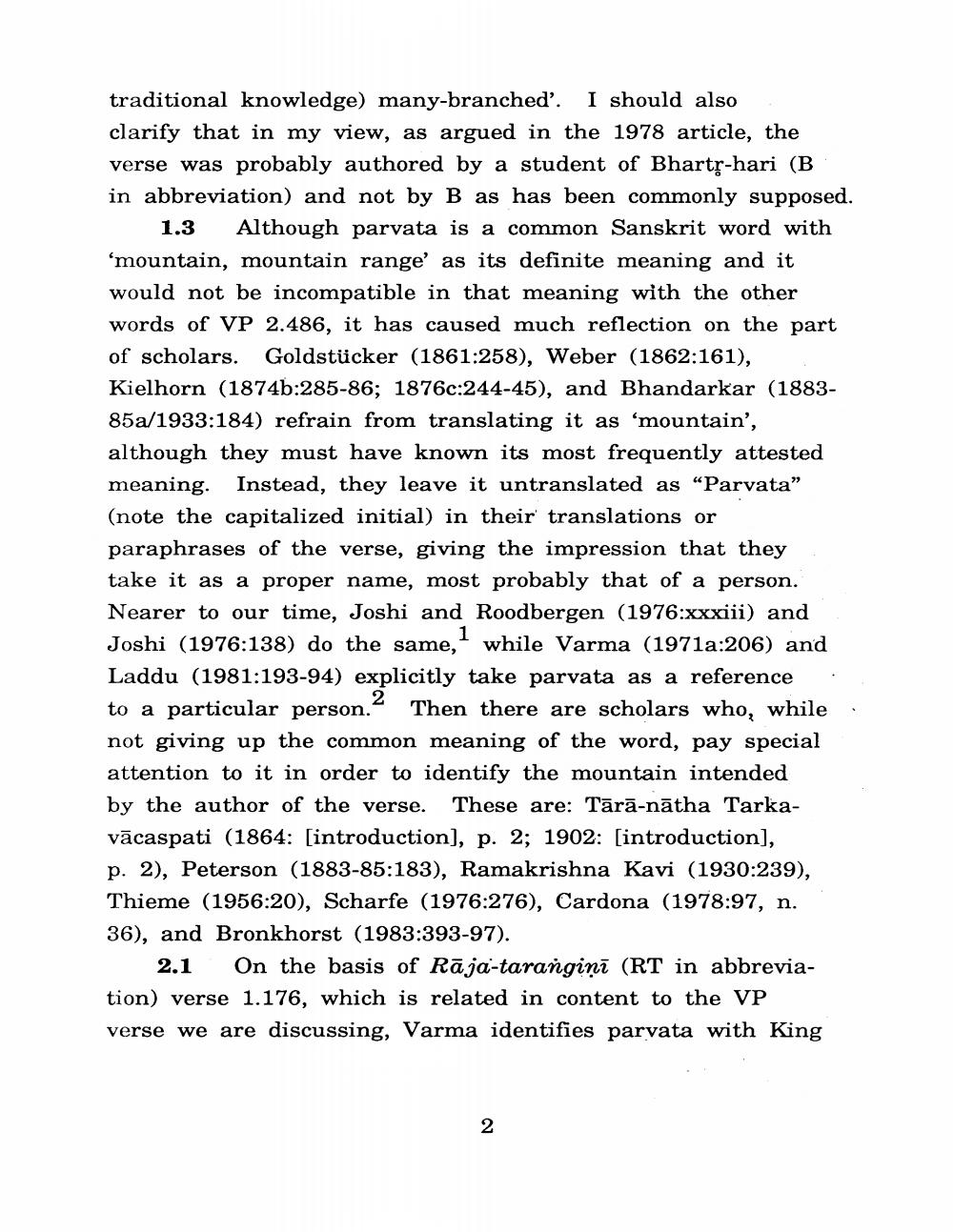Book Title: Paninian Studies Author(s): Ashok Aklujkar Publisher: Ashok Aklujkar View full book textPage 2
________________ traditional knowledge) many-branched'. I should also clarify that in my view, as argued in the 1978 article, the verse was probably authored by a student of Bhartr-hari (B in abbreviation) and not by B as has been commonly supposed. 1.3 Although parvata is a common Sanskrit word with 'mountain, mountain range' as its definite meaning and it would not be incompatible in that meaning with the other words of VP 2.486, it has caused much reflection on the part of scholars. Goldstücker (1861:258), Weber (1862:161), Kielhorn (1874b:285-86; 1876c:244-45), and Bhandarkar (188385a/1933:184) refrain from translating it as 'mountain', although they must have known its most frequently attested meaning. Instead, they leave it untranslated as “Parvata" (note the capitalized initial) in their translations or paraphrases of the verse, giving the impression that they take it as a proper name, most probably that of a person. Nearer to our time, Joshi and Roodbergen (1976:xxxiii) and Joshi (1976:138) do the same, while Varma (1971a:206) and Laddu (1981:193-94) explicitly take parvata as a reference . to a particular person. Then there are scholars who, while not giving up the common meaning of the word, pay special attention to it in order to identify the mountain intended by the author of the verse. These are: Tārā-nātha Tarkavācaspati (1864: [introduction), p. 2; 1902: (introduction), p. 2), Peterson (1883-85:183), Ramakrishna Kavi (1930:239), Thieme (1956:20), Scharfe (1976:276), Cardona (1978:97, n. 36), and Bronkhorst (1983:393-97). 2.1 On the basis of Rāja-tarangiņī (RT in abbreviation) verse 1.176, which is related in content to the VP verse we are discussing, Varma identifies parvata with KingPage Navigation
1 2 3 4 5 6 7 8 9 10 11 12 13 14 15 16 17 18 19 20 21 22 ... 47
